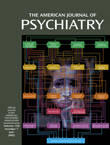Pregnancy in Women With Eating Disorders
To the Editor: Although the study by Debra L. Franko, Ph.D., et al. (1) aimed to contribute to the current knowledge of mental health disorders in relation to pregnancy outcomes, it was severely limited because of research design and methods. While this longitudinal study provided much-needed groundwork for an open-ended study of eating disorders and their impact on pregnancy, it did so without a comparison group, thus limiting its generalizability. Most significant, the inferences regarding the prevalence of postpartum depression are difficult to meaningfully interpret because of the methods used and the measurement of postpartum depression. Because of the research design, it is difficult to ascertain how many women were depressed before the study and how many became depressed for other reasons. While the correlation between depression and eating disorders is certainly worthy of exploration, it is important to note that clinical depression may have been already established before the pregnancy.
Although the women diagnosed with depression in this study were classified as experiencing “postpartum depression,” it is unclear whether this was preexistent or actually developed during the postpartum period. The measures used by the authors are specific to the detection of depression but may be less sensitive in detecting postpartum depression or subclinical symptoms suggestive of “postpartum blues.” The use of an instrument specific to the postpartum period, such as the Edinburgh Postnatal Depression Scale, has been demonstrated in the literature to be sensitive to the detection of postpartum depression as distinct from other forms of clinical depression (2) and has demonstrated reliability and positive predictive value in the detection of depression specific to the postpartum period (3–6).
While DSM-IV does not currently differentiate postpartum depression as a separate diagnosis, this distinction is a significant issue in current research surrounding women’s mental health during and around pregnancy. Perhaps this added specificity and the use of a comparison group in future studies could add salient research understanding to the unique epidemiology of postpartum depression.
1. Franko DL, Blais MA, Becker AE, Delinsky SS, Greenwood DN, Flores AT, Ekeblad ER, Eddy KT, Herzog DB: Pregnancy complications and neonatal outcomes in women with eating disorders. Am J Psychiatry 2001; 158:1461-1466Link, Google Scholar
2. Cox JL, Holden JM, Sagovsky R: Detection of postnatal depression: development of the 10-item Edinburgh Postnatal Depression Scale. Br J Psychiatry 1987; 150:782-786Crossref, Medline, Google Scholar
3. Grazioli R, Terry D: The role of cognitive vulnerability and stress in the prediction of postpartum depressive symptomatology. Br J Clin Psychol 2000; 39:329-347Crossref, Medline, Google Scholar
4. Harris B, Huckle P, Thomas R, Johns S, Fung H: The use of rating scales to identify post-natal depression. Br J Psychiatry 1989; 154:813-817Crossref, Medline, Google Scholar
5. Lee DT, Yip AS, Chiu HF, Chung TK: Screening for postnatal depression using the double-test strategy. Psychosom Med 2000; 62:258-263Crossref, Medline, Google Scholar
6. Murray L, Carothers AD: The validation of the Edinburgh Postnatal Depression Scale on a community sample. Br J Psychiatry 1990; 157:288-290Crossref, Medline, Google Scholar



